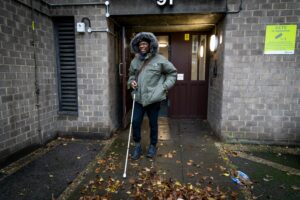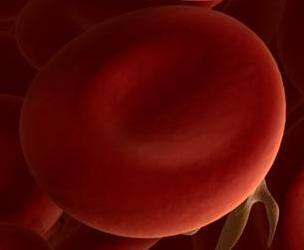Blindness: A new light in darkness?
By Tahmid

Vision is the most dominant sense we possess, and loss or deficit of this sense can be particularly difficult to deal with. Fortunately, scientists throughout the world are working hard to develop novel treatments for the different causes of severe vision impairment.
What is blindness?
Blindness refers to severe vision impairment, which cannot be corrected by wearing glasses or contacts. According to the current statistics, there are 36 million people globally who have total vision loss, i.e., they are completely blind to the point where they can’t even see light. The majority of these cases are due to treatable conditions such as cataracts, but people living in more deprived areas in the developing world do not have access to treatments.
The rest of the millions of people across the world are blind due to other conditions, which currently have no cure. This is because most other conditions affect the photoreceptors directly, and the cells in the eye in humans do not have the capacity to regenerate or replace damaged cells. Therefore, the only treatments available to the public currently are aimed at slowing down the progression of the disease process as much as possible.
In recent years, scientists have made tremendous progress in helping cure blindness and returning vision. The novel techniques which I will discuss in this article are bionic eyes and cell regeneration.
Bionic eyes
The term “Bionic eyes” may make you think of robotic eyes with extra functions like, for example, x-ray vision. Although the reality is slightly different, the technology and scientific processes used to design this novel treatment are as fascinating.
An example of a bionic eye implant is the Argus II, which has been designed and tested by Mark Humayun, a well-known ophthalmologist (an ophthalmologist is essentially a medical doctor specialised in treating problems with the eye) and inventor, and his team. The principles by which this device works is quite complicated, but I will split the process in how it works into smaller, more digestible steps:
- An implant is first surgically inputted onto the retina, which then causes electrical activity in the retina and activates the few remaining photoreceptors which have not been affected by the disease.
- This implant is then wirelessly linked to a processing chip, which is found on a pair of glasses worn by the patient.
- The incoming light from the surroundings is detected by the camera and is then converted by the processing unit into signals.
- The signals are then sent to the implant in the eye. Based on the incoming signals, the implant causes electrical activity in the photoreceptor cells which then send signals to the brain to interpret a form of what is being “seen”.
The patients who are given this implant need to spend time learning how to interpret the new type of information being sent to their brain. In addition to that, the camera does not sense eye movement and so patients must get used to turning their heads to the direction they want to look at, instead of simply moving their eyes. The training to get used to the new way of seeing may seem difficult, which it is, but patients have reported some improvement in their vision. The vision is limited to light sources and objects that have clear edges, for example doors. This is because the implant only has around 60 electrodes which can cause the electrical activity in only a few of the photoreceptors that are not damaged. Normally, in the healthy eye with normal vision, there are millions of functioning photoreceptors. This means that performance of vision is not as high in quality with the implant.
The Argus II is a fantastic device, but it only works on the assumption that there are some healthy photoreceptors left in the retina. In the case where there are no receptors left, scientists are working on another project called Orion. The setup is like Argus II, but the key difference is that the implant is inserted on the part of the brain which is involved in vision interpretation. This means that the eyes can be completely bypassed, and so, in theory, even if the person has lost their eyes due to an accident, they would be able to have some vision with this new technology. The implant, like Argus II, will directly activate the neurons in the brain and the aim is to make the pattern of activation as close as possible to how it would be in people with healthy eyes.
Cell regeneration
As fantastic as bionic eyes are, there is another novel technique being developed, which is as cool. This work is based on some animals, such as reptiles and some fish, which can regenerate the cells in the eye and the neurons associated. Unfortunately, humans are unable to do this, but that’s the beauty of science – the hunt for curing diseases never stops (of course, it should always be ethical).
One team in the US, led by Thomas Reh, have taken inspiration from such animals and have attempted to do something similar in mice. They have shown that they managed to induce cells in the eye, called Muller glia, to differentiate (this means to specialise and change into another cell type) into neurons. Although the resulting cells were not true photoreceptor cells, the fact that they demonstrated cells being induced to change into neurons is phenomenal. The next steps are to direct the differentiation towards photoreceptors specifically.
This technique has many advantages if properly developed and is proven to be safe and effective in humans, as it would not require implants like for the bionic eyes as mentioned previously. Therefore, the risk of surgery would not need to be taken and the cost of maintenance could also be lower, making the treatment more accessible.
Conclusion
Apart from bionic eyes and cell regeneration, there are many other routes being investigated to treat blindness, such as gene therapy. Scientists are making tremendous progress in developing these techniques, and with technology advancing very fast, there will soon be light at the end of the tunnel.



